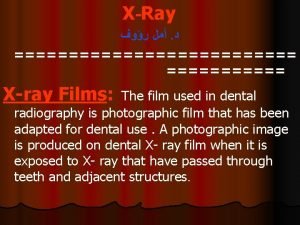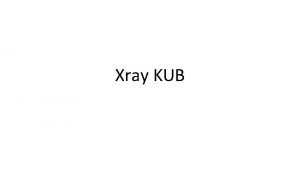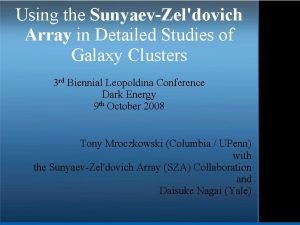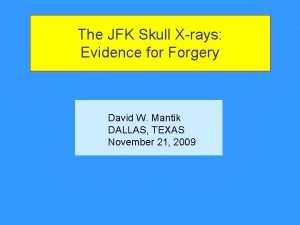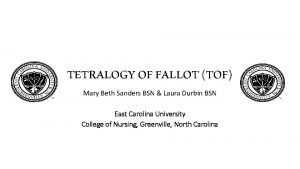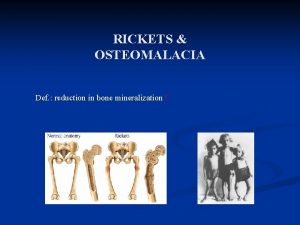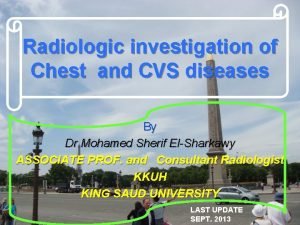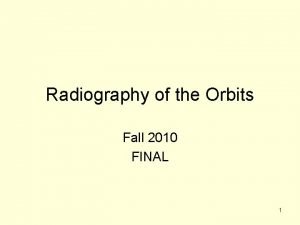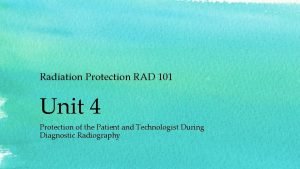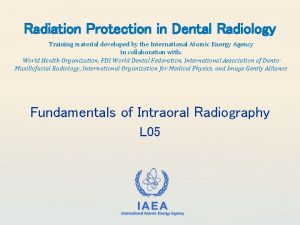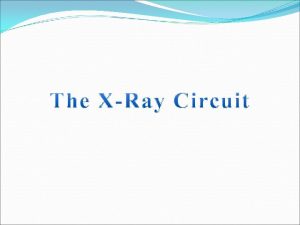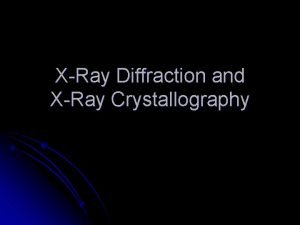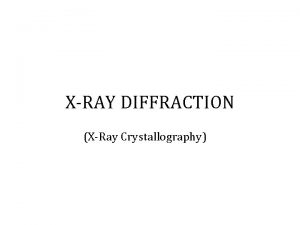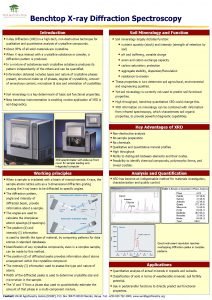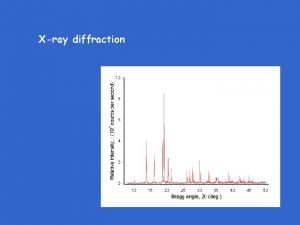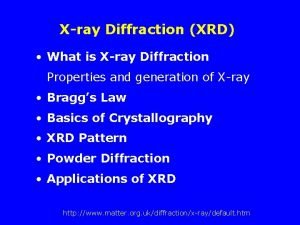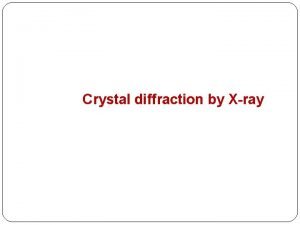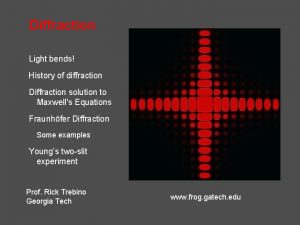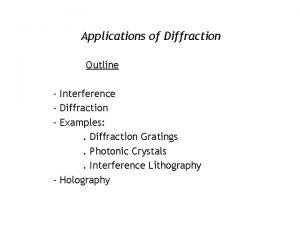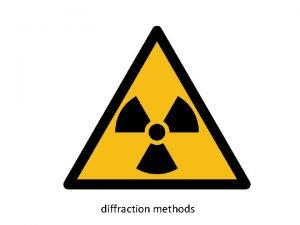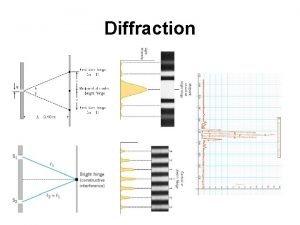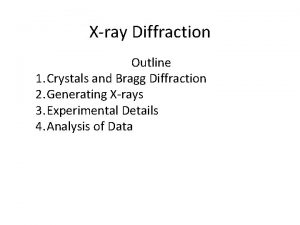UltraHigh Resolution Xray Diffraction 12 Xray diffraction data















- Slides: 15

Ultra-High Resolution X-ray Diffraction • 12 X-ray diffraction data sets collected at the APS p. H 5 p. H 7 p. H 9 Room temperature, hydrogenated 1. 05 Å, R=10. 6% 1. 05 Å, R=11. 3% 1. 15 Å, R=11. 1% Room temperature, deuterated 1. 05 Å, R=10. 7% 1. 05 Å, R=12. 2% 1. 20 Å, R=10. 4% Liquid nitrogen temperature, hydrogenated 1. 05 Å, R=10. 9% 1. 05 Å, R=11. 5% 1. 05 Å, R=11. 4% Liquid nitrogen temperature, deuterated 1. 10 Å, R=10. 6% 1. 00 Å, R=10. 9% 1. 05 Å, R=11. 9%

Ultra-High Resolution X-ray Diffraction • Covalent distances – Measure C—O and C—N lengths for ionizable amino acids – The Cambridge Structural Database • Small molecule structures; 1. 00 Å resolution or better • Asp/Glu Example • Non-covalent distances – Hydrogen bonding 1. 20 Å 1. 25 Å 1. 30 Å 1. 25 Å

Oops Recent NMR work on alpha-lytic protease established the p. Ka of the active site Asp in the serine proteases as being around 2. Should therefore see no proton on this residue at p. H 5. In our room temperature structures of gammachymotrypsin, it is indeed unprotonated. BUT – in the cryo structures, it is protonated at p. H 5.

Precision and Accuracy of the Distance Data • Calculate RMSD of all bonds for individual residues • At highest resolution (1. 00 Å), differences greater than 0. 02 Å are significant • BUT – need “gold standard” where we are CERTAIN of the protonation state of all ionizable residues • SOLUTION – NEUTRON DIFFRACTION to locate deuterons directly from their nuclear density, at room temperature, at p. H 5, 7 and 9

Asparagines are Unambiguous Nuclear Density Electron Density

Water Orientation Nuclear Density = Blue Density = Red Electron

Structure 22, 899– 910, June 10, 2014


To Summarize • Nearly all the structures in the Protein Data Bank in the last 25 -30 years have been determined at -200 o. C, more than 100 degrees below the glass transition in protein dynamics • Such low temperatures have clear-cut effects on protein dynamics and protein volume and internal packing, but indeterminate effects on loop and side-chain conformations, interdomain positions, residue protonation states, and metal ion spin states, among other things

A Proposal The protein crystallographic community should make a concerted effort to determine at least one room temperature crystal structure for every unique protein in the Protein Data Bank, at the highest possible resolution

A Proposal The protein crystallographic community should make a concerted effort to determine at least one room temperature crystal structure for every unique protein in the Protein Data Bank, at the highest possible resolution. This might be a very good use for Free Electron Laser crystallography




Tom Alber
 High resolution low resolution
High resolution low resolution Data breach resolution
Data breach resolution Xray mastoid townes view
Xray mastoid townes view The label side of the dental film packet
The label side of the dental film packet Kub xray
Kub xray Xray xml editor
Xray xml editor Sza xray
Sza xray Jfk jr plane crash photos
Jfk jr plane crash photos Mary beth sanders
Mary beth sanders Rickets xray
Rickets xray Pulmonary embolism x ray
Pulmonary embolism x ray Rhese method orbits
Rhese method orbits Occipito-frontal
Occipito-frontal Xray technique chart
Xray technique chart Common causes of faulty radiographs
Common causes of faulty radiographs High frequency generator x ray
High frequency generator x ray



